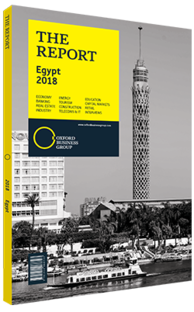Maged Ezzeldeen, Country Senior Partner, PwC: Viewpoint

Viewpoint: Maged Ezzeldeen
Between 2011 and 2016 Egypt faced continuous political and economic changes. It grabbed the globe’s attention due to its strategic geographical location and its influential role in the Middle East. The year 2017 was a turning point for the economy, fuelled by a decisive reform agenda. Efforts to jump-start the economy were three-pronged, focusing on regulatory reform, sustainable social inclusion and public infrastructure investments, thus increasing competitiveness.
In 2016-17 the government worked on restructuring the foreign currency exchange market, energy subsidisation, industrial licensing, laws, regulations, improving infrastructure and investing in mega-projects. These reforms aimed to decrease public debt to 8.3% of GDP, from 10.1%, and shifted from a $3.6bn deficit to a $10.9bn surplus. To that end, the government implemented a value-added tax (VAT) as part of its reform programme, which aims to sustainably increase tax revenue. It also changed the structure of the government’s payment mechanism through its migration to a fully electronic payment system.
Furthermore, the capital markets witnessed dramatic changes as the Central Bank of Egypt (CBE) focused on liberating foreign exchange rates to enhance Egypt’s competitiveness and ease pressure on foreign exchange reserves. Throughout 2017 the CBE removed all deposition and withdrawal restrictions, the foreign exchange market normalised and the parallel market for foreign currency lost most of its power. Also, the CBE increased the interest rates by an average of 700 basis points to achieve price stability and control inflation.
Additionally, the government worked on reforming the energy sector by gradually reducing subsidies on fuel and electricity. As for the industrial sector, the focus was on import substitution to improve exports.
Parliament has also approved various measures to improve the business environment, regarding industrial licensing and procedures to finance small and medium-sized enterprises. Furthermore, the new Investment Law, which came into effect on October 28, 2017, enhances investment rules and regulations. These reforms aim to encourage foreign and local investment through financial, administrative and tax incentives.
Aiming to increase productivity, the authorities have supported major infrastructure upgrades, such as the construction and improvement of roads and railways; investments in energy, with a focus on upgrading the grid and diversifying energy sources; agricultural reclamation through new projects, financing and technical support; and establishment of new communities, such as the New Administrative Capital and Alamein City.
Such reforms, coupled with a liberated foreign exchange and heavy public borrowing and spending patterns, have caused a high inflation rate – reaching as high as 33.1% – and may only be countered by establishing social safety nets. More than 2.4m families, or 8.6m individuals, benefit from the Takaful and Karama (“Solidarity and Pride”) programme. Moreover, Egypt’s geographic location makes it key to global markets in Europe, the Middle East, Africa and the Indian subcontinent. Egypt also benefits from the Suez Canal, which is considered the shortest link between the east and west.
According to the IMF, Egypt’s reform programme is showing signs of stabilisation, with GDP growth recovering, inflation moderating and fiscal consolidation on track. Consequently, strengthening competition and governance, improving access to finance and land, integrating women and youth in the labour market, and improving accountability of state-owned enterprises will all be part of the growth recovery programme.
Lastly, It has been evident that the economy is quickly picking up due to the aforementioned structural adjustments, which has allayed most foreign investors’ concerns. With heavy inflows of investments into energy, infrastructure and construction, and with a prominent entrepreneurial appetite, the economic cycle is moving forward, and we are confident that investors across the spectrum have Egypt on their investment map in 2018.
You have reached the limit of premium articles you can view for free.
Choose from the options below to purchase print or digital editions of our Reports. You can also purchase a website subscription giving you unlimited access to all of our Reports online for 12 months.
If you have already purchased this Report or have a website subscription, please login to continue.

